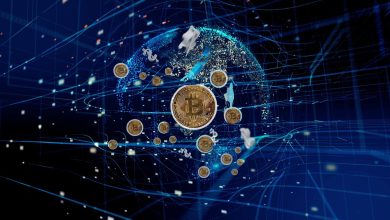Retail Market in USA after Covid-19

The epidemic will disappear by time, but like many sectors, it will transform retail. The retail world will find a different consumer profile than before. In order to respond to this new profile, it will have to gain new features.
Nothing will be the same.
The United States experienced the Covid-19 crisis, by the beginning of March, two months after China, about one month after the Continental Europe. Although many of stores closed, shopping malls stopped working in two weeks, faced with empty shelves, long gueues; American consumers, who define shopping as an indispensable part of life, beyond a need, adapted quicker than expected to this situation.
The main reason for this may be that the shopping habits of the American retail consumer started to digitalize on early 2000s, much more before this crisis. For example, sectors such as books, entertainment, electronics started digital transformation almost 20 years ago. According to the data announced by Nielsen in early 2020, 40 percent of American 2019 basic food shopping was already digital shopping. The epidemic has spread and implemented an digital transformation in two months to some sectors which were unsuccessful to make it done over several decades.
For example, according to Nielsen’s March 20020 digital consumption data, the American family started digital food shopping 10 times more in large cities. According to Rakuten Intelligence’s March 2020 data, in the period of 1-15 March 2020, the American online shopping growth rate was 210.1 percent in terms of turnover compared to the previous year. In fact, the only obstacle to the increase of these figures in thousands of rates was that the food markets did not have enough staff and product delivery infrastructure to keep up with the shopping volume. For example, the earliest delivery date for six limited food markets that we checked on March 31 for few available products, was on April 6. Amazon Prime, which Amazon established to change the balances in fresh food shopping and integrated with Whole Food, could not even provide any dates for delivery.
Nevertheless, the American consumer is pushing the system to digitize food and basic needs shopping as much as possible. It is predicted that the digital shopping habit will be permanent in a minimum of 20 percentage of the American family.
“If you can do it at home, do it at home” :
Well, will the only transformation that Covid-19 brings to the American retail world will be digital shopping? I think no. At this point, I would like to first share a new word Covid-19 has added to the American family’s dictionary: In-Homing. So, “If you can do it at home, do it at home”. For example, before going to their office every morning, American professionals who definitely stop by Starbucks and get their coffee will get used to the taste of the coffee they cook at home, and the Starbucks coffee habit will only turn into an occasional morning event even if life returns to its old routine. Will the taste of pizza made at home and pasta make children forget the taste of Nando, Taco Bell? Will fitness volunteers, who enjoy walking, cycling in the open air, renew their sports club memberships with the same frequency? Working in home, educating in home, home entertainment and other home oriented activities are essential now and often unknown how to deal with them, but will they become an indispensable part of life and considered as natural?
Many people think that ‘In-Homing’ will bring a significant change not only to the American family but also to every family living in many regions of the world, especially in big cities, and this different life habit will be reflected automatically in all consumption and retail. We anticipate that the “interactive shopping” period, the existence of which is based on years, but whose importance has not been fully understood, will begin. The importance and value of the environment, smell, feel, employee that accompany your shopping will be decisive even more than product or service. Whether it is a restaurant, a sports club or a food market, brands that can enjoy the consumption moment and make it interactive will continue to meet the consumer.
New Era In Relation With Brands:
Another effect of the Covid-19 crisis on retail is that it begins to eliminate the impact of brands in our lives with the speed of light, from food to television channels, from toiletries to beverages. In this period of absence and uncertainty, will consumer who started to drink beverage brands he never used to drink, took the cleaners he never used, switched to streaming from one or two channel television platforms, love the brands he has met? More importantly, at what rate will the consumer open itself to different and new experiences without being attached to any brand? How will this new perspective of the consumer affect global trade? Will small and medium-sized local formations or new international brands be able to make room for them more easily in the American market? Will the pleasure of saying “my brand” unexpectedly lose its value in the eyes of the consumer only because of a virus? When the crisis is over, famous brands will say to customers: “Okay, you couldn’t use me, maybe you couldn’t reach me, maybe I couldn’t reach you. But now the crisis is over. Now we can be together again, look, I’m ready.” What kind of answer will they get from the consumers?
A New Consumer Profile:
Will retail market face with a more cautious, slower, more conservative consumer profile from now on? A third issue that has not been fully emphasized on the post-crisis effect on consumer life is the psychological effect of the virus on the consumer. Now, retail is waiting for a consumer who sees a possible danger closer, more likely, worried, more frugal, more conservative at every moment of his life.
For example, as of 20 March in America, unemployment of up to 3.23 million, retreating salaries and working hours that have already affected 30 percent of the professional working population, consumer loans rising like an avalanche in a week, postponed repayments… How will the consumer will not become a more closed and more conservative after this new experience he is tested with his life? He will not choose to save instead of spending, or set aside instead of buying to get it? For example, will the consumer, who does not shop for clothes for months or makes very small proportions, rush to shop clothing brands with the excitement of freedome after Covid-19, or in fact, when the limitations disappeared, even though he does not feel like that now, will he see that he changed unconsciously as a result of the new reality he met and consumption has now reduced the impact on his life?
Rakuten announced in March 2019, digital shopping volume of products that which is not a basic requirement across the US, fell 33 percent compared to the previous year in March. Could it may be a sign of permanent anxiety that will affect the life of the consumer?
So, how will the retail brands that barely survive the crisis react to this new consumer when life returns to normal?
Retail World After The Outbreak:
Briefly, to think of the retail world after Covid-19 as a world where only products and services have completed their digital transformation can survive, means underestimating the impact of this stay-at-home period on the retail and consumption habits. Because when life returns to normal after Covid-19, a consumer will be waiting for the retail world with new values, gaining new habits, more open to diversity and change, more experiential, more open-minded, more flexible and undoubtedly more aware of the importance of money. And brands that will keep up with this new consumer, accompany and meet their expectations will face with many new experiences with a brand new retailing. After Covid-19, we will not see many brands that dominate the American retailer at the moment, or we will see much less. But in this new period, it is certain that many new brands that change simultaneously with the consumer, more flexible and more compatible will have the opportunity to meet with the American consumers.




